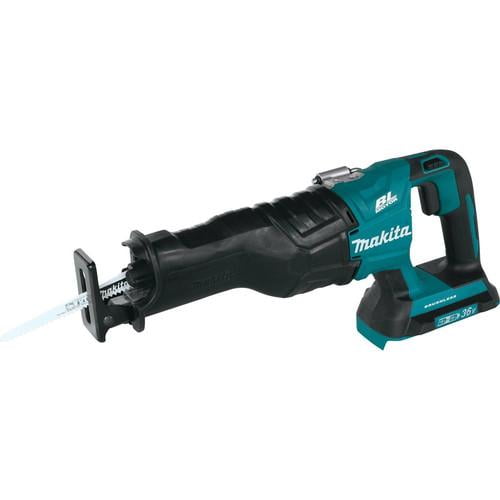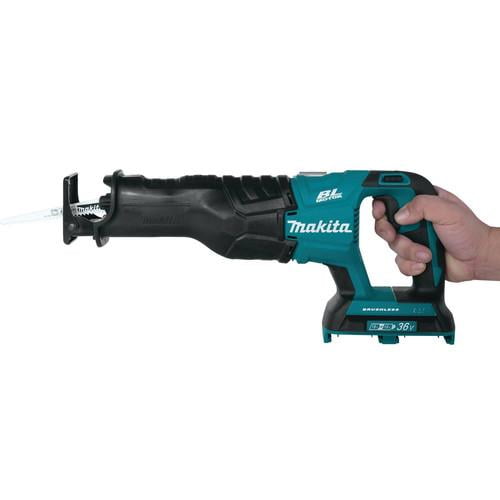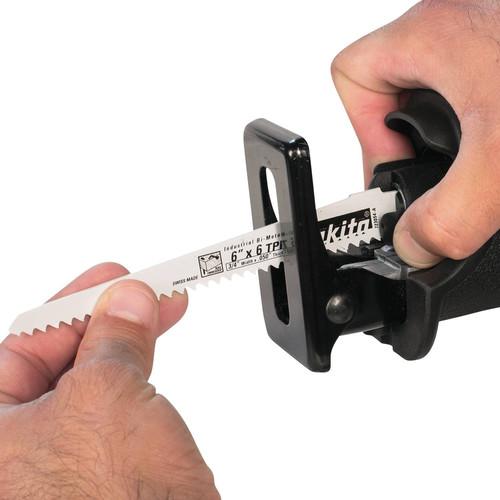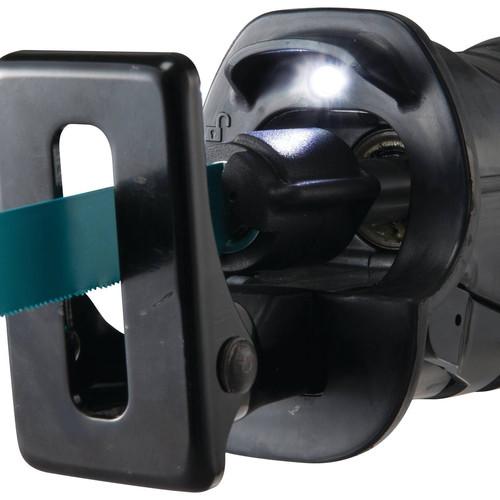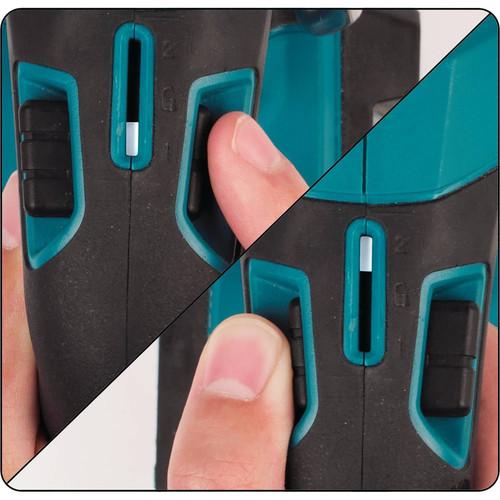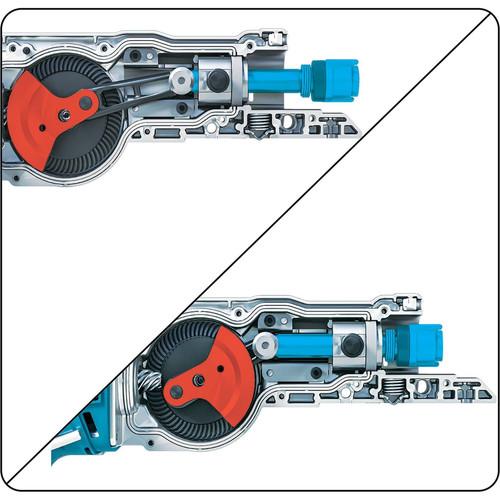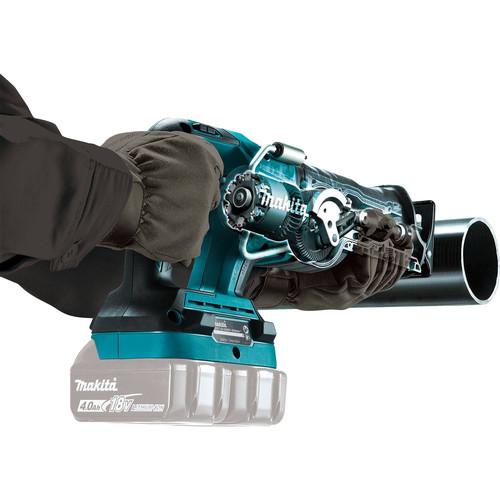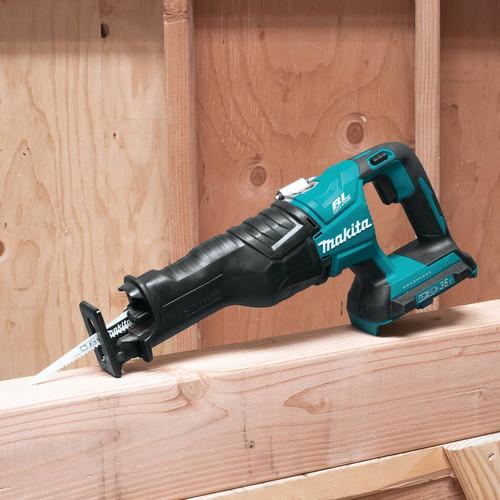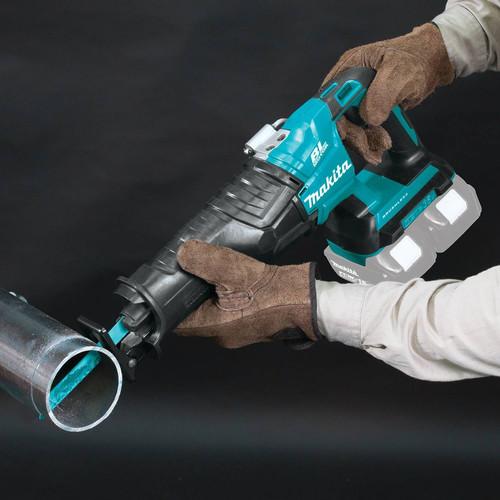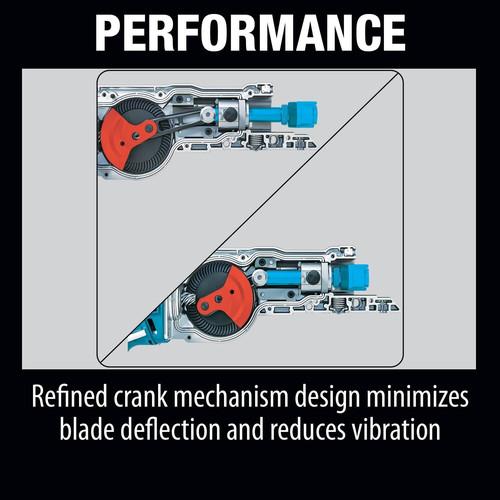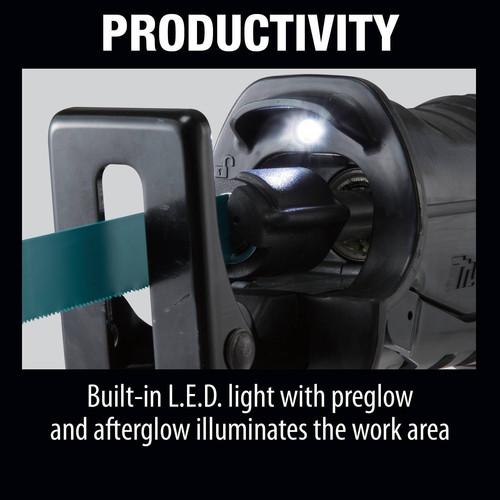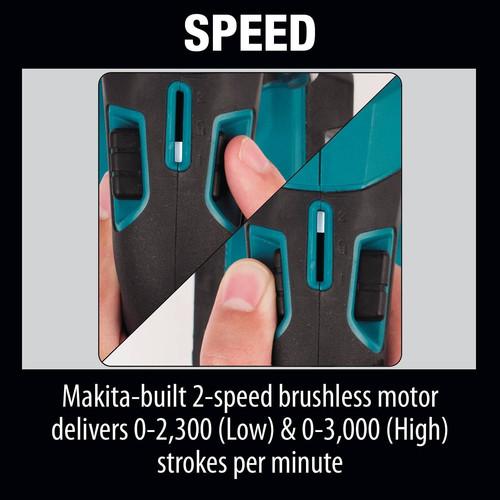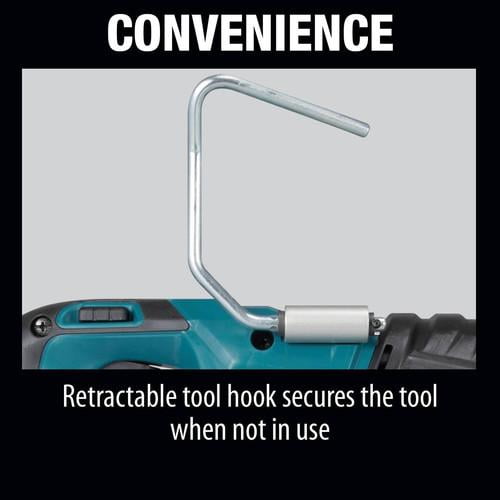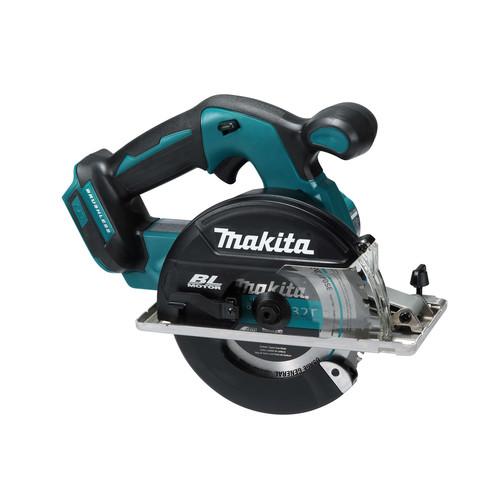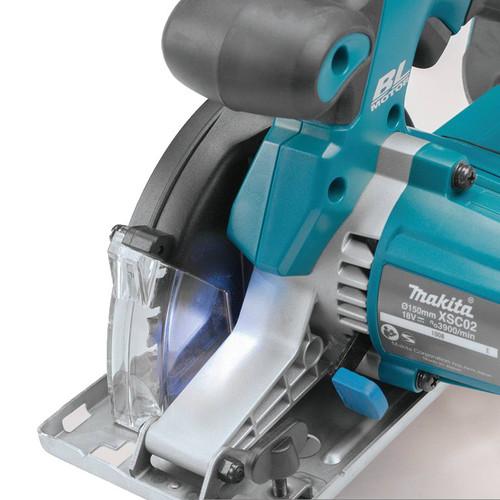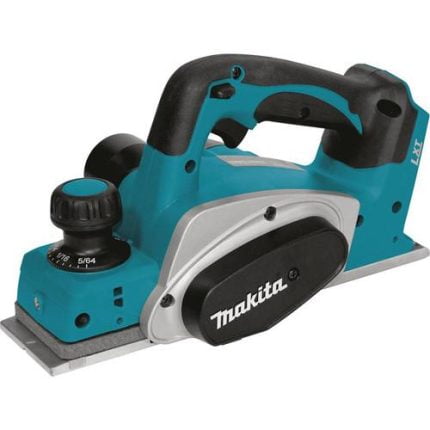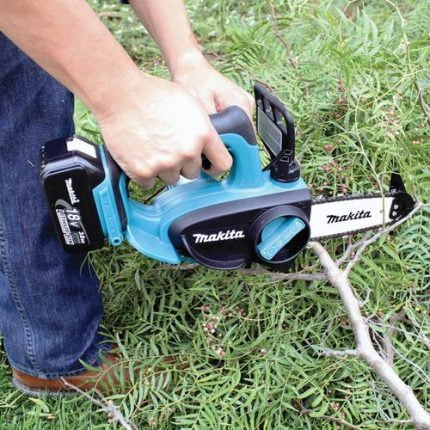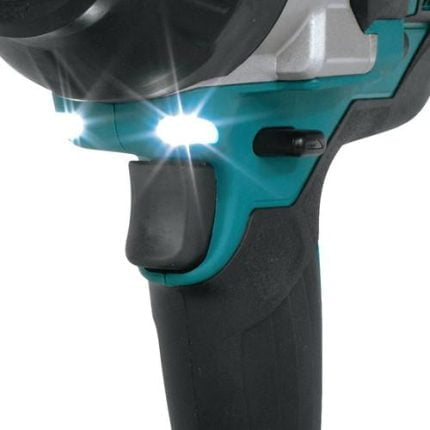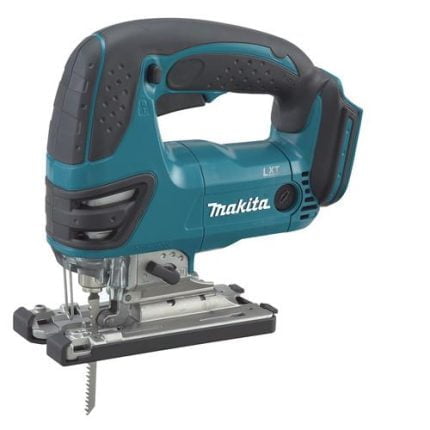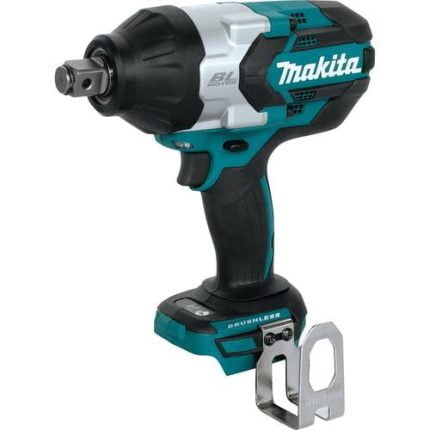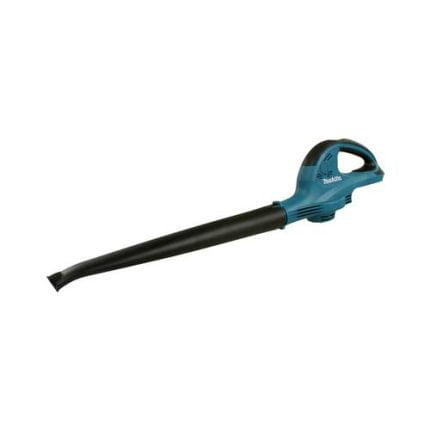Details
Makita, a pioneer in brushless motor technology and battery innovation, combines both in the 18V X2 LXT (36V) Lithium-Ion Brushless Reciprocating Saw Kit. It’s powered by two 18V Lithium-Ion batteries (sold separately) for 36V power and performance, and has an electronically-controlled BL Brushless motor that matches torque and RPM to the application. Makita 18V X2 means freedom from the cord, even for demanding applications like cutting and demolition that traditionally called for a corded Reciprocating saw. Best of all, users can remain in one battery platform, using the same fast-charging 18V batteries on the XRJ06Z as they use across the Makita 18V LXT cordless tool line-up.
The XRJ06Z is equipped with efficiency features for faster cutting. The long 1-1/4″ stroke length increases cutting efficiency, and the refined crank mechanism design minimizes blade deflection and reduces vibration. Convenience features include an L.E.D. light to illuminate the line of cut, retractable tool hook, and “tool-less” blade change for faster blade installation and removal.
Features:
- Powerful brushless motor delivers 0-3,000 (metal cutting) and 0-2,300 (wood cutting) strokes per minute for faster cutting
- Long 1-1/4 in. stroke length provides increased cutting efficiency
- Two 18V LXT Lithium-Ion batteries deliver the power and performance of a corded reciprocating saw without leaving the 18V LXT platform (batteries not included)
- Refined crank mechanism design minimizes blade deflection and reduces vibration
- Brushless motor eliminates carbon brushes, enabling the BL motor to run cooler and more efficiently for longer life
- Efficient brushless motor is electronically controlled to optimize battery energy use for up to 50% longer run time per charge
Includes:
- Tool Only – Batteries and Charger Sold Separately
- LXT 18V X2 Cordless Lithium-Ion Brushless Reciprocating Saw (Tool Only) – MKTNXRJ06Z
- Reciprocating Saw Blade
Downloads:
Compliance and Restrictions
warning: Some dust created by power sanding, sawing, grinding, drilling, and other construction activities contains chemicals known to the State of California to cause cancer, birth defects or other reproductive harm. Some examples of those chemicals are: lead from lead-based paints, crystalline silica from bricks and cement and other masonry products, and arsenic and chromium from chemically-treated lumber. Refer to product manual/instructionsCancer

